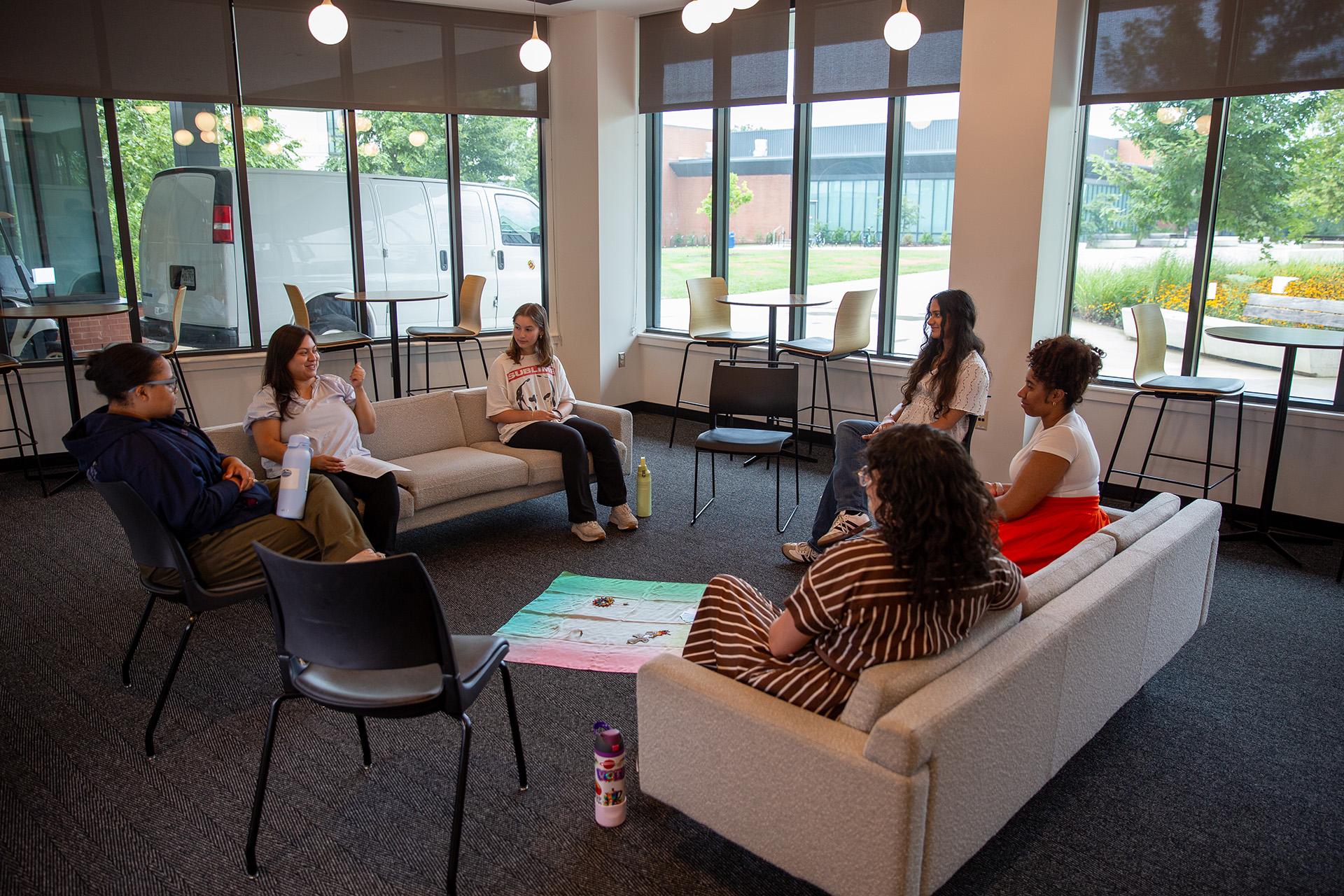Restorative Practices
Building a Thriving Community in Our Residence Halls
Restorative practices are a community-based philosophy that emphasizes our interconnectedness to ourselves, one another, and the land that we’re on with foundations in Indigenous and spiritual traditions from across the globe. It reminds us that what impacts one of us impacts all of us, and our actions have ripple effects on ourselves and others. Strong relationships are at the heart of our community—especially in our residence halls.
Goals
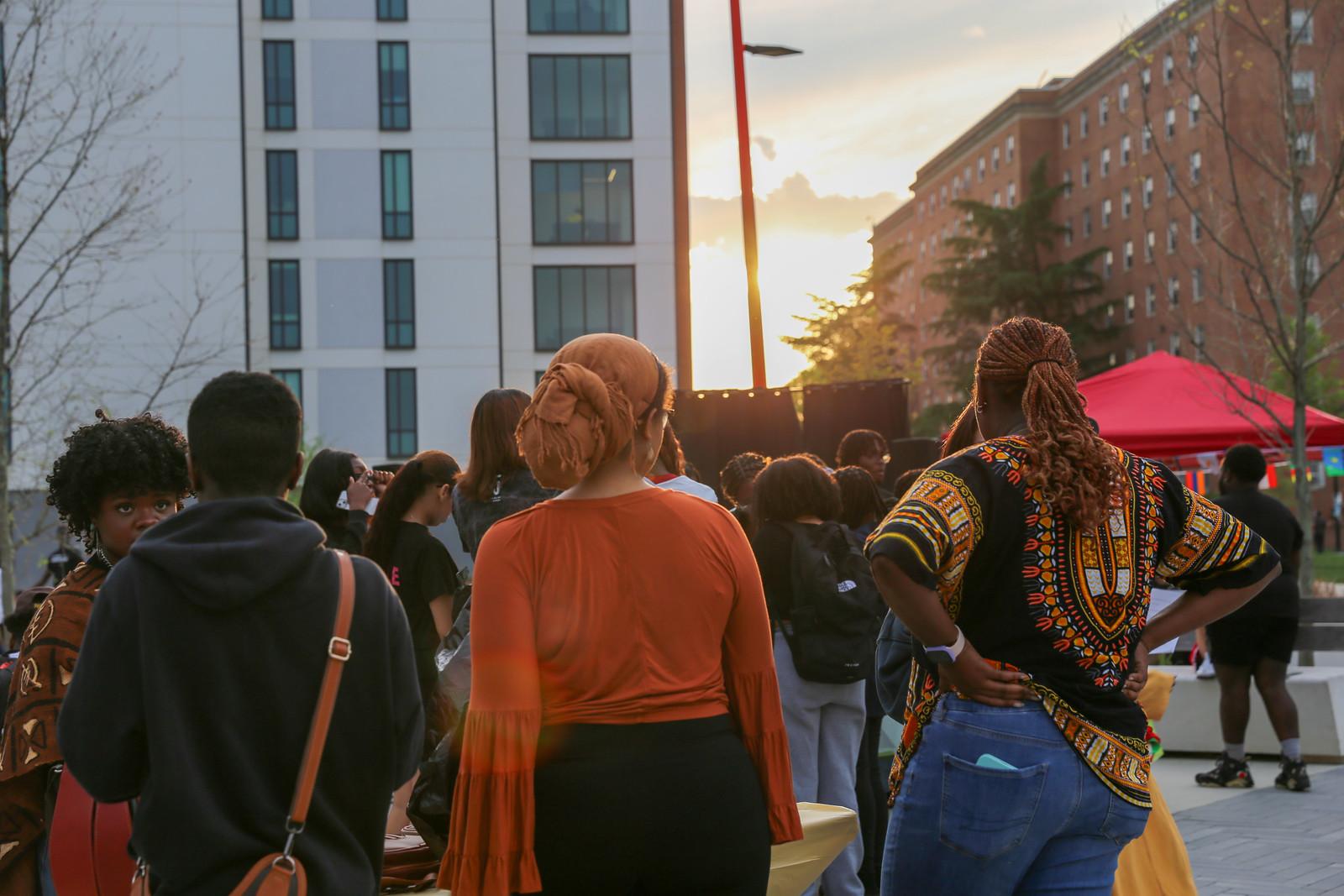
Foster Belonging
Increase our residents’ sense of belonging to their communities
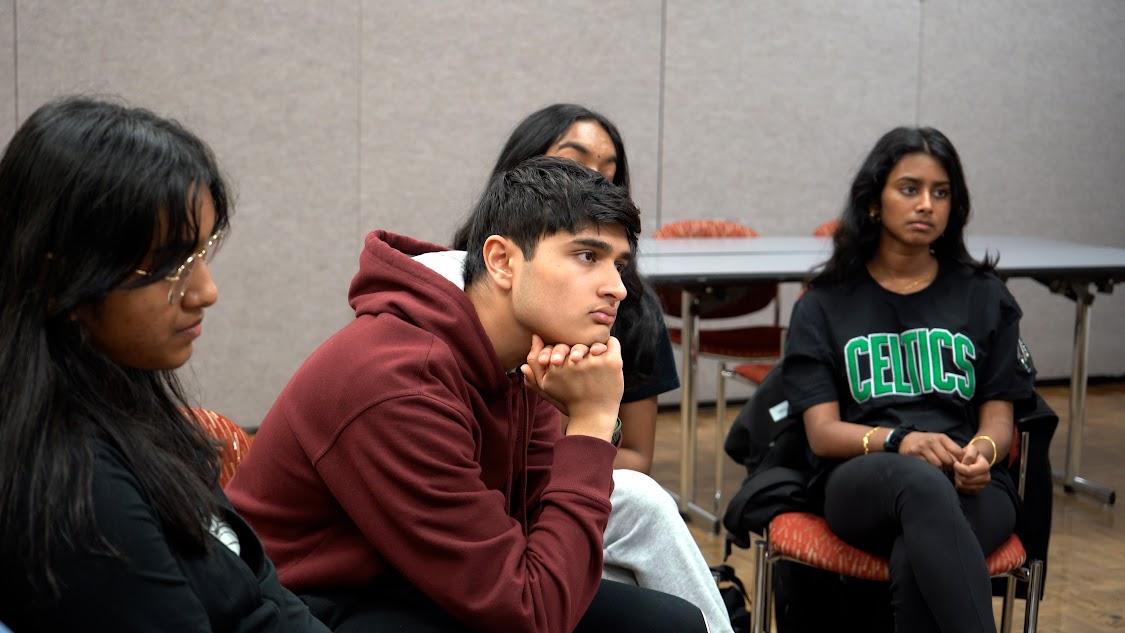
Encourage Thoughtfulness
Help residents understand obligations that exist based on community needs
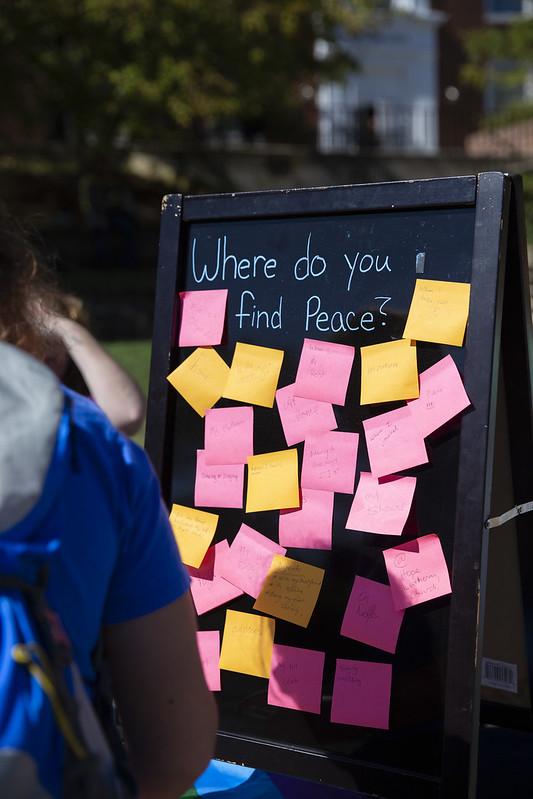
Reduce Harm
Decrease incidents of harm in our communities
Why Restorative Practices?
Data shows that when communities foster emotional connection and trust through restorative practices people are more likely to communicate openly, support each other, feel safe, and stay engaged with a shared sense of purpose.
Impact On Our Campus

Increased Graduation
Rate

Decreased Recidivism
Rates

Decreased Misconduct
Referrals
How We Use Restorative Philosophy
Restorative philosophy is already woven into many aspects of the Maryland Residential Experience, including the Terp Tracks residential curriculum, and student conduct with the Restorative Justice Alternative Resolution Process (RJARP).
In Resident Life, restorative philosophy work supports our department’s mission of cultivating connections through community, promoting growth and learning, and creating safe, inclusive spaces.
We are also training our staff to facilitate restorative, community-building circles and review policies, procedures and programming through a restorative philosophy lens.
In UMD’s Restorative Justice Alternative Resolution Process (RJARP), the goal is to:
- Center the needs of those harmed,
- Repair the harm caused,
- Rebuild trust and support the growth of those who caused harm,
- And honor and invest in our UMD community's healing and thriving.
For more information about RJ, and the Restorative Justice Alternative Resolution Process (RJARP), please see the Office of Student Conduct website.
Differences Between Restorative Practices and Restorative Justice
| What To Know | Restorative Practices (RP) | Restorative Justice (RJ) |
|---|---|---|
| Purpose | Build community, strengthen relationships & prevent problems | Repair harm, rebuild trust after conflict & promote accountability |
| Timing | Proactive, ongoing | Reactive, used after harm or conflict |
| Examples | Floor meetings, roommate agreements, community circles | Restorative conversations, harm and impact circles |
Get Involved
For more information, questions, or how to get involved further, reach out to the Assistant Director of Resident Life for Restorative Practices and Community Engagement at ngdiaz@umd.edu.
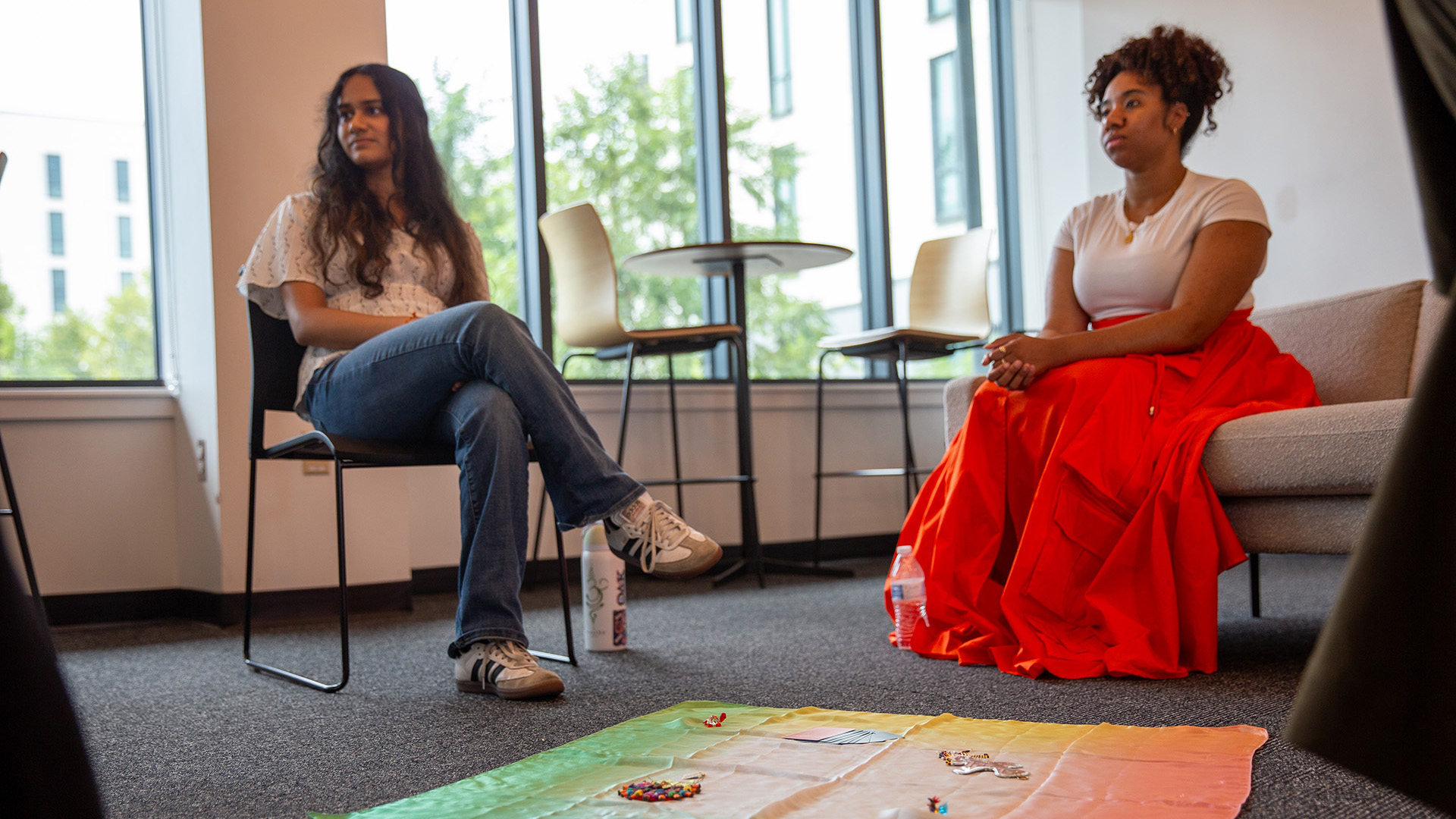
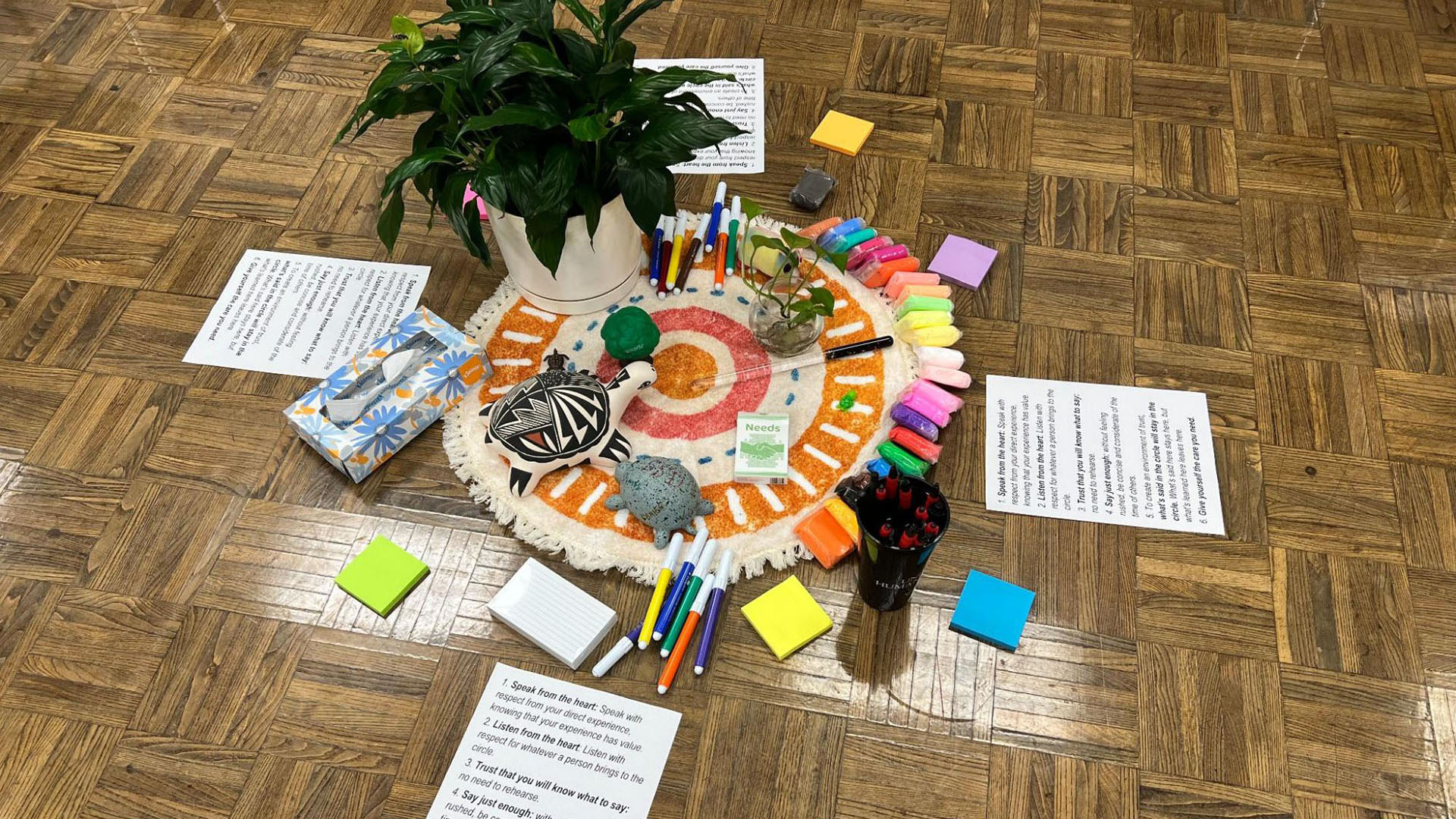
Glossary
Restorative Philosophy is a community-focused framework that considers how our thoughts and actions impact ourselves, each other, and the land that we’re on. Restorative Philosophy is rooted in Indigenous and spiritual traditions from across the world. Restorative philosophy is the basis for both restorative practices and restorative justice.
| Indigenous/Spiritual Community | Restorative Tradition | Ancestral Lands | Also Known As |
|---|---|---|---|
| Maori | Restorative Justice Conferences | Aotearoa | New Zealand |
| Ojibwe | Healing Ceremonies | Bawating Nayaano-nibiimaang Gichigamiin (Literal translation: The 5 Freshwater Seas) | Canada |
| Cree | Healing Circles | "Eeyou Istchee," which means "The Land of the People" | Canada |
| Organized Village of Kake (Tlingít) | Circle Peacemaking Program
(Additional Source) |
Lingít Aaní (Map Reference) |
Alaska |
| Abenaki (*Abenaki means “People of the Dawnland” - “waban,” meaning “east,” and “aki,” meaning “land.”) | Healing Circles | Ndakinna (Homeland) |
Northeast U.S |
| Navajo | Peacemaking (hozhooji naat’aanii, ‘people talking together to re-form relationships with each other and the universe.’) | Dinétah meaning “among the people”
Also Diné Bikéyah |
Southwest U.S |
| Pokagon Band of Potawatomi Indians AKA Neshnabé (autonym) AKA Bodéwadmi (Keepers of the Fire (name used by other indigenous people) | Peacemaking Circles
Native Justice Model: Unleashing the Power of the Circle |
Mzhigé'nak
Note: This word translates to Michigan generally, though this group is specifically from Southwest Michigan |
Straits of Mackinac (Great Lakes Region)
Southwest Michigan |
| Native Hawaiian (Kānaka Maoli (autonym)) | Ho'oponopono (To set right) | Hawai’i | Mokupuni Hawai’i |
| Louden Tribe | Circle Sentencing | Galena Village | Galena, Alaska |
| Mennonite | Peacebuilding and Reconciliation |
* This chart is not an exhaustive list, but rather, a few examples to illustrate the rich variety of traditions across Indigenous communities.
Restorative Practices are proactive ways to live out restorative philosophy by strengthening community relationships, connection, and building trust. This can be done through restorative, community building circles, thoughtful conversations, and/or by changing our community’s culture to focus on considering our impact on one another and the land that we’re on.
Restorative justice is the reactive way to respond when harm inevitably happens. In this process, all those involved are invited to participate in resolving the situation, potentially including supporting people and community representatives. The needs of those impacted are centered, and the goal is to repair harm at the root to make things as right as possible. In order to ensure the harm is repaired and (re)build trust in the person who caused the harm (AKA the person responding), the person responding is offered opportunities for education, reflection, and support, while being held accountable. All those involved, including the person who caused harm, come together to decide how the person responding will make it as right as possible and rebuild the community’s trust that they will not do this again in the future. All parts of this process are voluntary and individuals can opt out at any time. This process is can only offered when the person responding acknowledges that they caused harm and wants to make amends.
A restorative circle, or a restorative, community building circle is a form of restorative practices that is an opportunity for individuals to come together to connect with themselves and one another. For each circle, there tends to be a pre-determined topic, like to celebrate, gather feedback, brainstorm, check-in, get to know one another better, debrief, grieve, agree on group expectations, process a situation, and more. In a restorative circle, participants will have the opportunity to actively listen to other circle participants, share their own thoughts and stories in response to questions, and honor each other's humanity along the way. Restorative circles tend to begin with a formal opening, whether it be a grounding breath, quote, or activity, and include time for participants to respond to questions to explore a particular topic, and end with a formal closing.
A restorative circle conference is the part of the Restorative Justice Process when all parties gather to name what harm happened, how they were impacted, and decide together how to move forward. This step happens after all parties have opted into the process, have pre-circle conferences, and are ready to meet to move forward. The graphic below shows how parties are seated in a restorative circle conference.
Healthy communities that use restorative philosophy are understood in three tiers. In Tier 1, the focus is on proactive, community-building work to strengthen relationships. Aside from greater sense of belonging, stronger morale, and connectedness, this tier helps prevent issues and create conditions that lead to thriving. 80% of efforts are spent in Tier 1. When harm inevitably happens, Tier 2 is available to repair identified harms at the source in a way that involves impacted parties, active accountability, and centers healing. Tier 3 allows individuals to reintegrate back into the community after a separation or shift of roles. If Tier 1 is fully integrated in the community and being done with fidelity, 80% of time is spent in Tier 1 and only 20% of restorative work occurs in Tiers 2 and 3.

